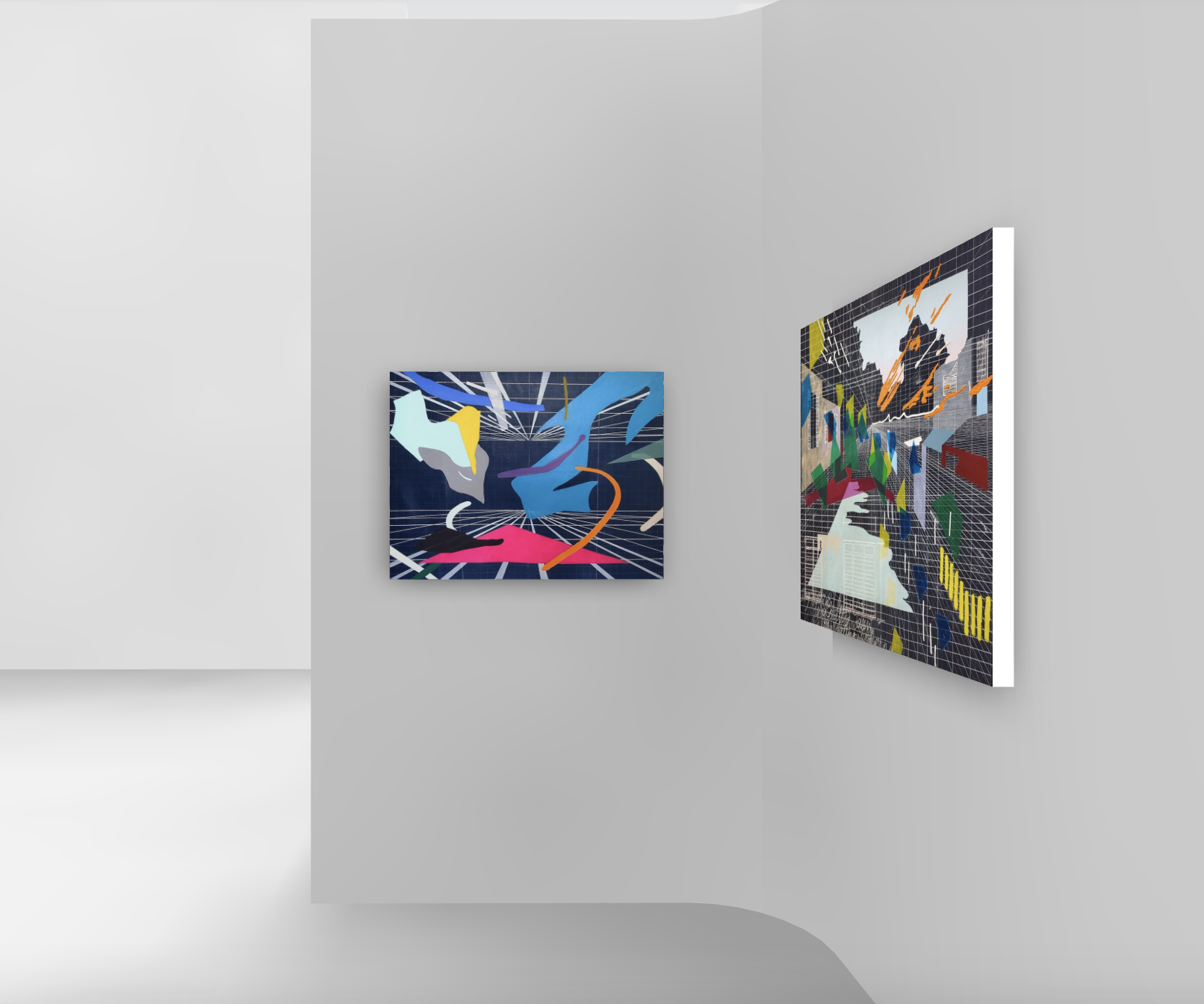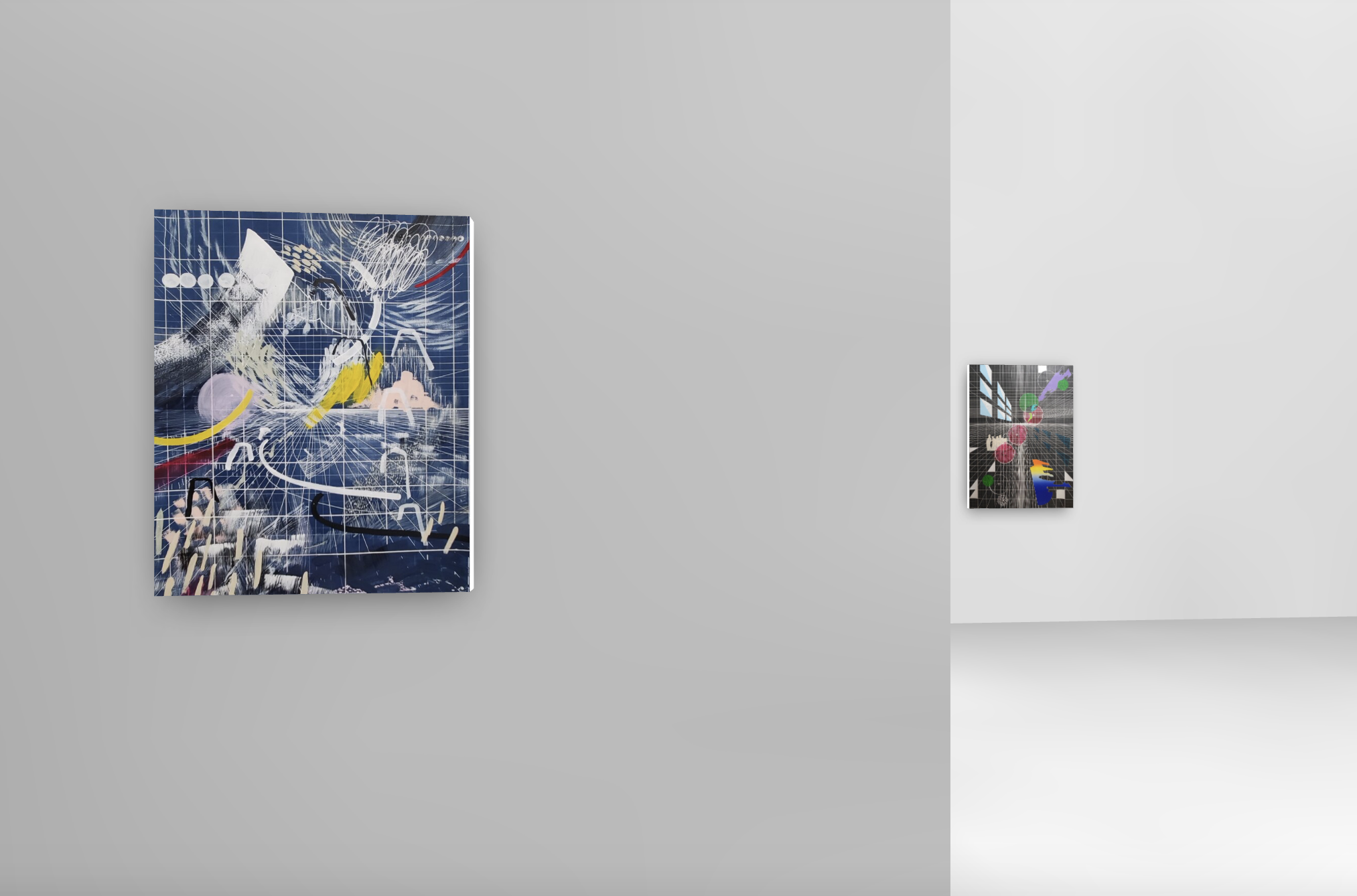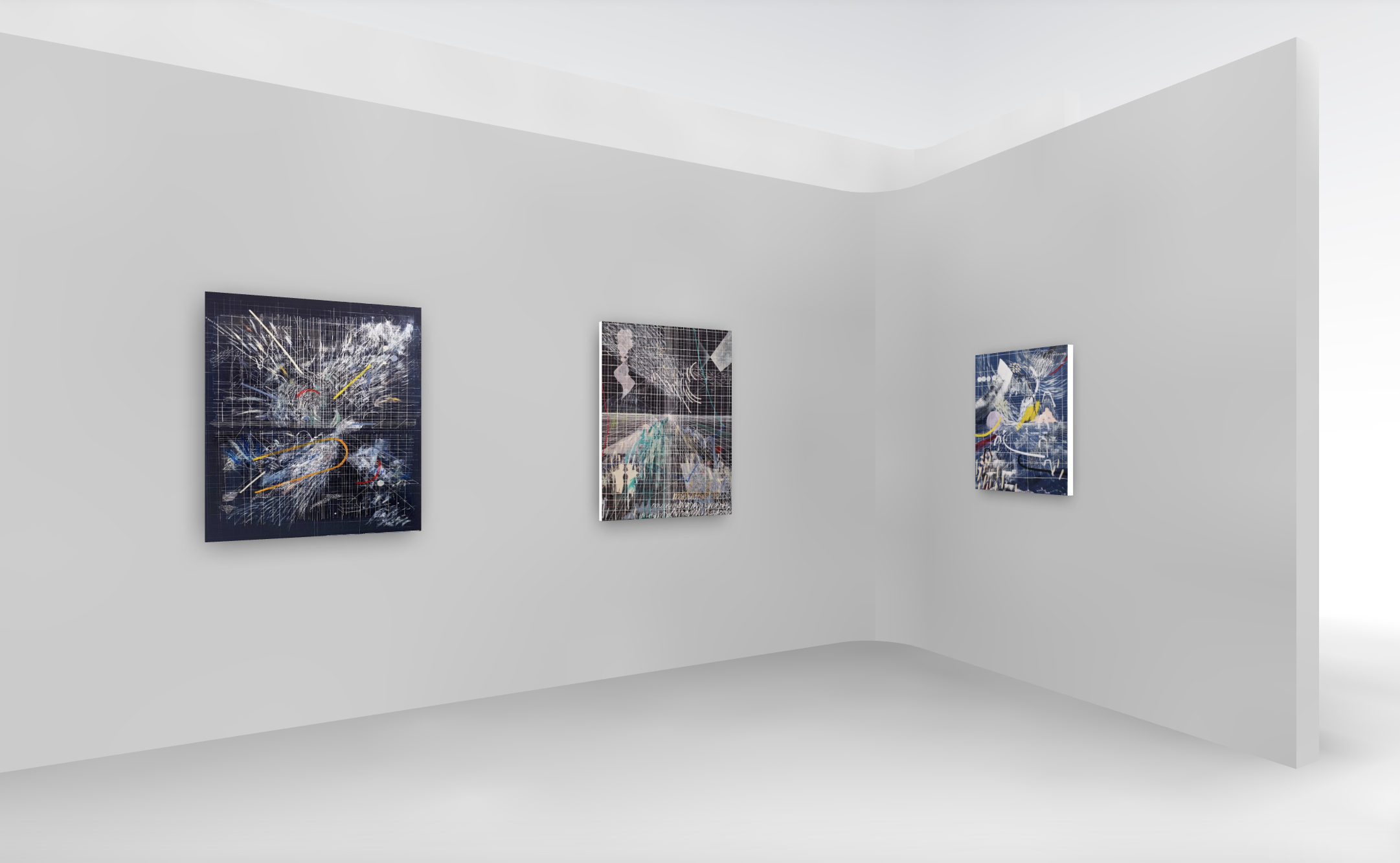Karl Mata Hipol b.Philippines immigrated to Canada in 2015. Hipol's practice is primarily grounded in drawing and painting. Influenced by his personal narrative, Hipol combines his artistic and architectural background to create gestural & perspectival abstract blueprint paintings. Currently, Hipol is working towards a bachelor's in Fine Arts, majoring in Visual Art, and minoring in Curatorial Practice at Emily Carr University of Art + Design. He recently curated an exhibition at the Gordon Smith Gallery of Canadian Art titled Beyond the Horizon.
Where does your research process begin? Are there any texts, music, or artists you draw inspiration from?
This series reflects the development and intermixing of two methodologies I observe within my creative process. I started this project intuitively, through an academic lens. In the painting Mirroring Silhouette, I created an image bank of works from Julie Mehretu to Cy Twombly. Then, I deconstructed them, extracting visual elements that spoke to me, and recontextualized them to fit into my narrative. In the beginning, my process was very linear, following how my practice developed, from Architecture to Fine Arts—starting my first layers with technical drawing. Then, gestural marks on top. I would respond to each mark with an intuitive approach and no initial sketch. However, in Looking Through the Windows, I broke away from my previous method. I began working with photographs as a first step - then layered back and forth between technical drawing and gestural painting.
How does architectural structure play a role in this series?
Architecture plays a significant role in this collection; it has become my gateway to Abstract Art. The use of Architecture in my work is an ode to my past studies in the Philippines; this practice serves as the foundation of my paintings. At first, I was only using architectural elements and schedules. But now, the most recent paintings look at structural buildings such as residential houses, specifically those in the Philippines.
Your work explores what it means to have a multilayered Canadian identity. What themes have you been exploring most recently?
I have steered a little bit away from the themes I explore in this series. I still work with blueprints and architecture. However, I have added language, and some of my pieces have become sculptural. In my new series, I am focusing on studying the colonization of the Philippines, weaving blueprints of Filipino colonial architecture from the 16th to 18th century into my work. Through this practice, I hope that I will better understand where I came from and who I am and ultimately start the process of decolonization within myself.
This series challenges viewers to examine their own cultural identity; why is it important for people to question past histories to explore their inner selves?
It is essential for me to garner a greater understanding of my cultural identities to create a sense of self-love and belongingness wherever I go. I believe knowing myself will allow me to be more sympathetic, considerate, and emphatic towards others. In Amy Fung book Before I Was A Critic I Was a Human Being, she notes the role first-, second-, and third-generation immigrants have played in stopping colonial agendas and supporting Indigenous sovereignty. To understand the issues happening here in Canada, I know that I also have to address my own experiences and histories of colonization. As a result of my decolonization, I hope to unlearn my colonized mentality. Therefore, I will not repeat the mistakes of our past histories.
What is the most gratifying and challenging aspect of your practice?
Ultimately, I create works for myself: I am the first audience, but through this very personal account of my experience immigrating to Canada, I hope others can connect with these works. The most fulfilling part of my artistic practice is creating a connection with someone - eliciting an emotional response- curiosity, delight, or even confusion. The purpose of my work is not necessarily to educate or express an ideology; it's to bring people together through emotion. It's not easy to find this balance at times.
A big congratulations, you have just finished curating the exhibit Beyond the Horizon at The Gordon Smith Gallery. Can you speak more about this project?
Thank you! Beyond the Horizon is one of the fruits of my labour during my summer internship. I have so much gratitude for the team at the Gordon Smith Foundation, Young Canada Works, and the Artists For Kids for offering me so much guidance. Beyond the Horizon is my first major curatorial project installed at the Gordon Smith Gallery of Canadian Art. The show displays work that breaks the barriers of conventional practices and expands beyond mixed media approaches to offer new ways of making and thinking. I am using the phrase Beyond the Horizon to encourage viewers to push their limits, feel comfortable with the unknown, and expand beyond their horizons, reminding everyone of the endless possibilities available to us.
Has taking on a curatorial role changed the way you approach your art practice?
Curating has made my manner of thinking and way of making more intentional and thoughtful. For example, whenever I create a painting, I also think about how it would interact with the space and other exhibited works. Also, my practice has become more research-based, and I guess that is also where my critical thinking comes in.
What does a typical studio day look like for you? Has this creative space served a new purpose throughout the pandemic?
Due to the pandemic, my classes have all been online for the last two years. This has actually helped me! Not having to transport all my paintings and tools back and forth to school has saved me hours. I find more time to devote to my practice, submit applications for exhibitions, and accept commissions. When I start my day, I usually have a sketch or an idea of what I want to make. No matter what my project for the day is, I will still prepare and plan out the steps and layers beforehand. Once I am set, I will put on my earbuds, listen to music, and focus on painting. Depending on how much time I have, I usually paint for a couple of hours, four to six.
If you were to suggest one place in Vancouver someone goes to feel inspired or invigorated, where would this be?
I find inspiration in nature. So, if I were to suggest one place in Vancouver, it would be Lynn Canyon Park in Lynn Valley. It is easily assessable, and the winding trails always seem to lead you to beautiful open green spaces, waterfalls, and lakes. There is also a lovely balance of nature and man-made infrastructure in these locations - it's interesting to appreciate the interaction between organic and structural elements; these experiences fuel my work.







